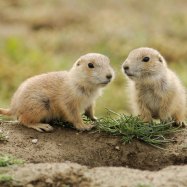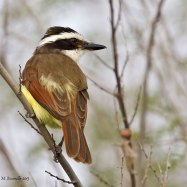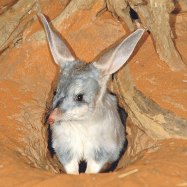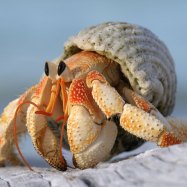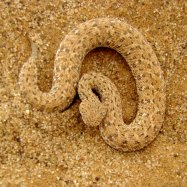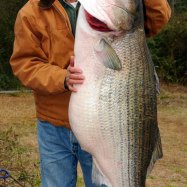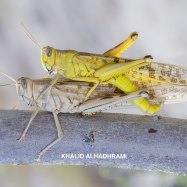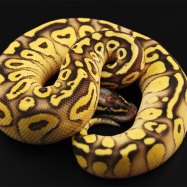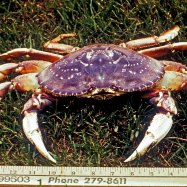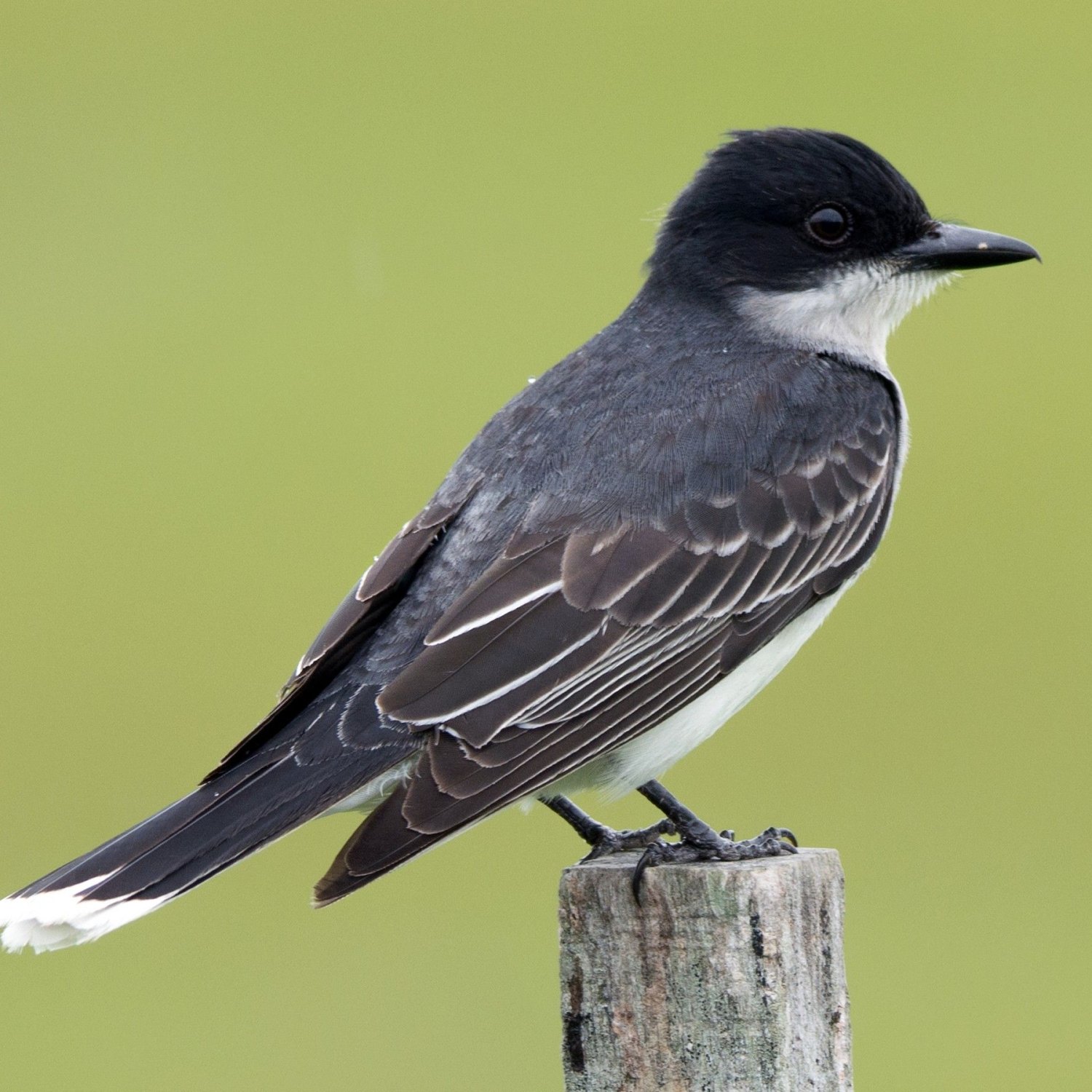
Eastern Kingbird
7.5-9.1 inches
Meet the Eastern Kingbird, a medium-sized bird found in Eastern North America. With a sleek body measuring 7-9 inches in length, and a wingspan of 13-15 inches, these birds are best known for their broad chest and long, pointed wings. Belonging to the Tyrannidae family, the Eastern Kingbird is a sight to behold! #EasternKingbird #BirdWatching #Tyrannidae
Animal Details Summary:
Common Name: Eastern Kingbird
Kingdom: Animalia
Habitat: Eastern Kingbirds inhabit open areas including fields, pastures, meadows, orchards, and forest edges.
The Mighty Eastern Kingbird: A Master of the Skies
The world of birds is full of dazzling creatures, each with their unique features and behaviors. Yet, there is one bird that stands out among the rest, a master of the skies and a true king of the avian world – the Eastern Kingbird. This magnificent bird is a symbol of grace, strength, and resilience, with its striking appearance and impressive abilities. From its scientific name of Tyrannus tyrannus to its remarkable hunting methods, the Eastern Kingbird is indeed a force to be reckoned with Eastern Kingbird.Anatomy and Classification
To truly appreciate the Eastern Kingbird, we must first understand its anatomy and classification. The Eastern Kingbird belongs to the Animalia kingdom, Chordata phylum, and Aves class, as expected of any bird. Its order is Passeriformes, which means it is a songbird, and its family is Tyrannidae, which includes over 400 species of flycatchers. With its muscular build and impressive hunting skills, the Eastern Kingbird is aptly classified as a tyrant flycatcher.
Habitat and Distribution
The Eastern Kingbird is native to the United States, specifically the eastern region of the country, as its name suggests. These birds can also be found in parts of Canada, from Ontario to Newfoundland. During the winter months, the Eastern Kingbirds migrate to South America, with some traveling as far as the Amazon Basin. These birds prefer open areas such as fields, pastures, meadows, orchards, and forest edges, making them adaptable and able to thrive in various environments.Feeding Behavior
Eastern Kingbirds have a varied and fascinating diet Eared Grebe. They are primarily insectivores, with a preference for bees, wasps, beetles, grasshoppers, and dragonflies. They have also been observed to catch small fish and occasionally feed on fruits and berries. What makes their feeding behavior truly remarkable is their aerial hunting skills. These birds have the ability to catch their prey while in flight, making short flights from a perch and snatching insects mid-air with ease. This method of hunting is also known as hawking and showcases their agility, speed, and precision.Physical Characteristics
At first glance, the Eastern Kingbird may seem like an ordinary bird with a black and white coloration. However, upon closer inspection, its unique features become more apparent. These birds have black plumage on their head, back, and tail, with white undersides. They also have a concealed reddish-orange crown patch that is usually only visible during aggressive displays. This vibrant color adds a touch of flair to their otherwise monochromatic appearance.
With a length of 7.5-9.1 inches and a wingspan of 13-14.6 inches, Eastern Kingbirds have a medium-sized body that is perfectly adapted for their aerial hunting lifestyle. They have a sleek shape, with a broad chest and long, pointed wings, allowing them to fly with speed and agility. Overall, these birds are a sight to behold, with their striking colors and impressive physique.
The Kingbirds of the Sky
The Eastern Kingbird is a fitting name for this bird, as it truly is a king of the skies. Not only is it a skilled hunter, but it also exhibits amazing territorial behavior and protects its nest fiercely. These birds are known for their aggressive nature when it comes to defending their territory and mating partners. They will chase away much larger birds, such as hawks, crows, and even humans, who come too close to their nesting sites.
Not only do Eastern Kingbirds have powerful beaks and talons, but they also have a unique adaptation that adds to their intimidating tactics. When feeling threatened, these birds can spread their wings and raise a tuft of feathers on their head, called a "knot." This display makes them look larger and more intimidating, and they are often successful in driving away potential threats.
Intricate Nesting Habits
The Eastern Kingbird's dedication to its nest is truly remarkable. These birds are known for their intricate nesting habits, which involve collecting a variety of materials, such as twigs, grass, and feathers, to create a sturdy and well-protected nest. They also line the nest with soft materials, such as plant down and animal fur, to ensure the comfort of their offspring. The female will lay between 2-5 eggs, and both parents take turns incubating them. Once the chicks hatch, both parents work together to provide food and protection until they are ready to leave the nest.
The Importance of Conservation
As with many animal species, Eastern Kingbirds face various threats to their survival. Habitat loss due to urbanization and agriculture is one of the most significant risks, as it disrupts their nesting and feeding grounds. Pesticides and other chemical pollutants also pose dangers to these birds, as they can contaminate their food sources and lead to health problems.
However, conservation efforts have helped stabilize the Eastern Kingbird population over the years, and these birds are currently listed as a species of least concern on the International Union for Conservation of Nature (IUCN) Red List. Organizations such as the National Audubon Society and the North American Bird Conservation Initiative work towards protecting the habitats of these birds and raising awareness about the importance of preserving our natural world.
The Fascinating World of Birds
The Eastern Kingbird is just one of the many incredible species of birds that inhabit our planet. From their fierce hunting skills to their elegant appearance and devoted parenting, these birds are truly fascinating creatures that continue to captivate us. As we learn more about them and their behaviors, we begin to appreciate the vital role they play in maintaining our planet's delicate balance.
Conclusion
The Eastern Kingbird is a magnificent bird that deserves recognition and appreciation. With its incredible aerial abilities, striking appearance, and devoted nature, it is no wonder these birds are known as the kings of the sky. As we continue to protect and conserve their habitats, we can ensure that these majestic creatures will continue to roam the Eastern North American skies, inspiring us with their grace and resilience.

Eastern Kingbird
Animal Details Eastern Kingbird - Scientific Name: Tyrannus tyrannus
- Category: Animals E
- Scientific Name: Tyrannus tyrannus
- Common Name: Eastern Kingbird
- Kingdom: Animalia
- Phylum: Chordata
- Class: Aves
- Order: Passeriformes
- Family: Tyrannidae
- Habitat: Eastern Kingbirds inhabit open areas including fields, pastures, meadows, orchards, and forest edges.
- Feeding Method: Eastern Kingbirds feed primarily on insects, including bees, wasps, beetles, grasshoppers, and dragonflies. They catch their prey by making short flights from a perch and capturing insects mid-air.
- Geographical Distribution: Eastern Kingbirds breed in North America and can be found from eastern Canada to the eastern and central United States. During the winter, they migrate to South America, primarily in the Amazon Basin.
- Country of Origin: United States
- Location: Eastern North America
- Animal Coloration: Eastern Kingbirds have black plumage on the head, back, and tail, and white undersides. They also have a concealed reddish-orange crown patch that is usually only visible during aggressive displays.
- Body Shape: Eastern Kingbirds have a medium-sized body with a length of 7-9 inches and a wingspan of approximately 13-15 inches. They have a sleek shape, with a broad chest and long, pointed wings.
- Length: 7.5-9.1 inches
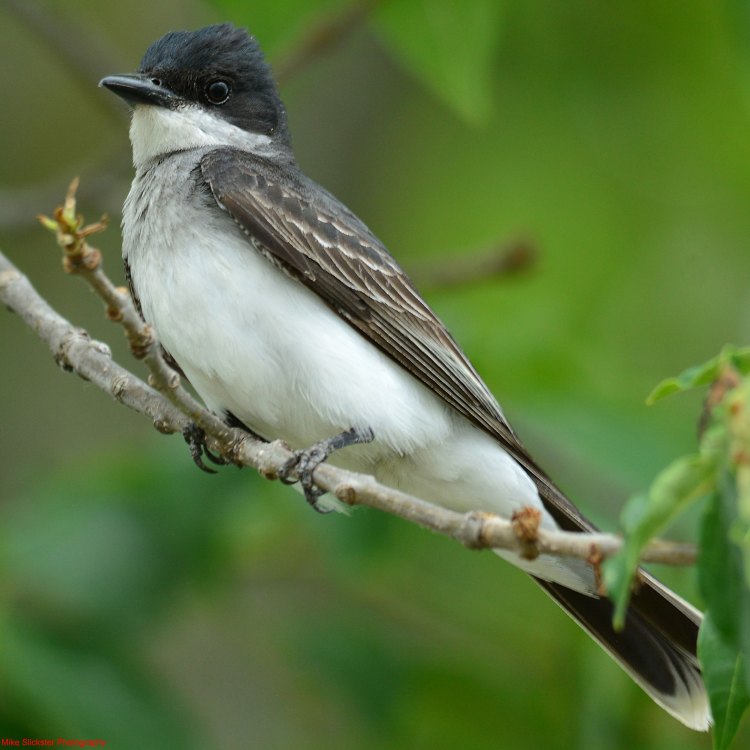
Eastern Kingbird
- Adult Size: Medium
- Average Lifespan: 5-10 years
- Reproduction: Eastern Kingbirds are monogamous and mate for life. The breeding season begins in May, and during this time, the male performs courtship displays to attract the female. The female builds a cup-shaped nest made of twigs, grass, and plant fibers, usually placed on a horizontal tree branch. The female lays 2-4 eggs, which she incubates for about 15 days. Both parents take turns incubating the eggs and caring for the nestlings. The young leave the nest after about 15-16 days but are still fed by the parents for a few more weeks.
- Reproductive Behavior: Monogamous
- Sound or Call: Eastern Kingbirds have a high-pitched, buzzing call that sounds like an electric zapping noise. They also make a variety of other calls, including chirps and chatters.
- Migration Pattern: Eastern Kingbirds are long-distance migrants. They fly from their breeding grounds in North America to South America, primarily in the Amazon Basin, where they spend the winter. They migrate both during the day and night, usually in small flocks.
- Social Groups: Eastern Kingbirds are primarily solitary birds but may form small flocks during migration or in feeding areas with abundant insect prey.
- Behavior: Eastern Kingbirds are known for their aggressive behavior, especially when defending their nesting territory. They will often attack and chase away larger birds, such as crows and hawks, that come too close to their nest.
- Threats: The main threats to Eastern Kingbirds include habitat loss, pesticide use, and nest predation by other animals. They are also susceptible to collisions with man-made structures, such as buildings and communication towers.
- Conservation Status: The Eastern Kingbird is listed as a species of Least Concern on the IUCN Red List. Although their populations have declined in some areas, they still have a wide distribution and are considered relatively common.
- Impact on Ecosystem: Eastern Kingbirds play a role in controlling insect populations, particularly agricultural pests. Their consumption of bees and wasps helps to reduce potential crop damage.
- Human Use: Eastern Kingbirds are primarily of interest to birdwatchers and bird enthusiasts. They are not typically hunted or used for any commercial purposes.
- Distinctive Features: Eastern Kingbirds have a distinctive black-and-white plumage and a concealed reddish-orange crown patch. They also have a sleek body shape with long, pointed wings.
- Interesting Facts: 1. Eastern Kingbirds are flycatchers, meaning they catch insects on the wing. 2. They are known for their aggressive behavior and will attack and chase away much larger birds that come too close to their nest. 3. Eastern Kingbirds have been observed using a 'hawking' technique, where they hover in the air and catch insects in mid-air. 4. They are often seen perching on the tops of trees or utility wires, where they have a good vantage point for catching insects. 5. Eastern Kingbirds are highly territorial during the breeding season and will defend their nesting territory from other birds.
- Predator: Eastern Kingbirds are preyed upon by larger birds such as hawks and owls. They are also vulnerable to nest predation by raccoons, snakes, and squirrels.
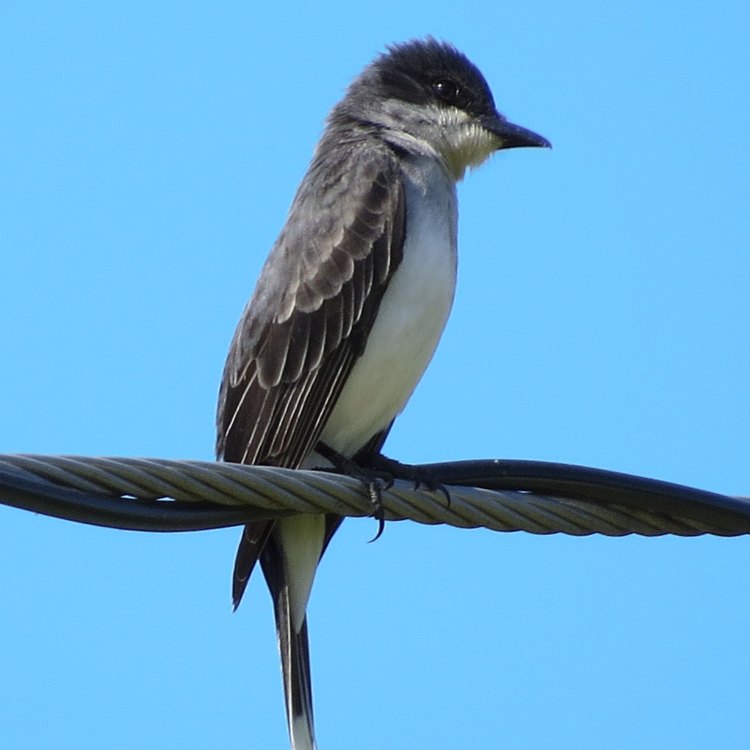
Tyrannus tyrannus
Discovering the Unique Features of the Eastern Kingbird
The Eastern Kingbird, also known as Tyrannus tyrannus, is a medium-sized songbird found across North America. With its distinctive black-and-white plumage and fiery crown patch, it is easily recognizable among other birds. But there's more to this bird than just its appearance. In this article, we will explore the fascinating world of the Eastern Kingbird and uncover its unique features that make it stand out in the avian world PeaceOfAnimals.Com.The Basics: Size and Lifespan
The Eastern Kingbird is classified as a medium-sized bird, with an average length of 22-23 centimeters and a wingspan of about 36 centimeters. They weigh around 45-50 grams, making them larger than most passerine birds, but smaller than their close relative, the Gray Kingbird.In terms of lifespan, Eastern Kingbirds typically live for 5-10 years in the wild. However, some individuals have been known to reach up to 15 years of age. Like most birds, their lifespan varies depending on factors such as habitat, food availability, and threats from predators.
Reproduction and Mating Behavior
Eastern Kingbirds are monogamous birds, meaning they mate for life. They usually select their mate during their first breeding season and remain together for the rest of their lives. The breeding season for Eastern Kingbirds begins in May, and during this time, the male performs courtship displays to attract a mate.Once a pair has formed, the female builds a cup-shaped nest made of twigs, grass, and plant fibers, usually placed on a horizontal tree branch Eastern Barred Bandicoot. The nest building is primarily done by the female, with occasional help from the male. The female then lays 2-4 eggs, which she incubates for about 15 days. Both parents take turns incubating the eggs and caring for the nestlings.
After about 15-16 days, the young leave the nest but are still fed by the parents for a few more weeks. The parents continue to care for their young until they can sustain themselves, usually around 4-5 weeks of age.
Distinctive Sound and Migration Patterns
One of the most unique features of the Eastern Kingbird is its high-pitched, buzzing call, which sounds like an electric zapping noise. They also make a variety of other calls, including chirps and chatters, which they use for communication with other birds.Eastern Kingbirds are long-distance migrants, flying from their breeding grounds in North America to South America, primarily in the Amazon Basin, where they spend the winter. They migrate both during the day and night, usually in small flocks consisting of a few individuals.
Social Behavior and Aggression
Eastern Kingbirds are primarily solitary birds, but they may form small flocks during migration or in feeding areas with abundant insect prey. However, during the breeding season, they are highly territorial and will aggressively defend their nesting territory from other birds.This bird is known for its aggressive behavior, especially when defending its nest. It will often attack and chase away larger birds, such as crows and hawks, that come too close to its nest. This behavior has earned them the nickname "Kingbird" as they are seen as the "king" of the birds in their territory.
Threats and Conservation Status
Like many other bird species, the Eastern Kingbird faces several threats in the wild. The main threats to their population include habitat loss, pesticide use, and nest predation by other animals. They are also susceptible to collisions with man-made structures, such as buildings and communication towers.Despite these threats, the Eastern Kingbird is listed as a species of Least Concern on the IUCN Red List. Although their populations have declined in some areas, they still have a wide distribution and are considered relatively common.
Ecosystem Impact and Human Use
Eastern Kingbirds play a crucial role in controlling insect populations, particularly agricultural pests. Their diet includes bees, wasps, and other insects, which helps reduce potential crop damage. They are also important for seed dispersal and pollination of plants.These birds are primarily of interest to birdwatchers and bird enthusiasts. They are not typically hunted or used for any commercial purposes. However, their presence in ecosystems can attract tourists and have economic value to local communities.
Distinctive Features and Interesting Facts
The Eastern Kingbird has several distinct features that set it apart from other birds. It has a sleek body shape with long, pointed wings, which aid in its aerial hunting and migratory flights. Its black-and-white plumage and concealed reddish-orange crown patch make it easily identifiable.Here are some interesting facts about Eastern Kingbirds:
- They are flycatchers, meaning they catch insects on the wing.
- They are known for their aggressive behavior and will attack and chase away larger birds that come too close to their nest.
- Eastern Kingbirds have been observed using a 'hawking' technique, where they hover in the air and catch insects in mid-air.
- They are often seen perching on the tops of trees or utility wires, where they have a good vantage point for catching insects.
- Eastern Kingbirds are highly territorial during the breeding season and will defend their nesting territory from other birds.
Predators and Protection
Like any other animal, Eastern Kingbirds also have natural predators. Larger birds, such as hawks and owls, are known to prey on them. They are also vulnerable to nest predation by raccoons, snakes, and squirrels, which may steal eggs or young from their nests.To protect their populations, measures have been taken to limit pesticide use and protect their habitats. However, further efforts are needed to ensure their long-term survival, especially in areas where their populations are declining.
In Conclusion
The Eastern Kingbird is a unique and fascinating bird that plays an important role in our ecosystems. Its distinctive features, reproductive behavior, and migratory patterns make it a special addition to the avian world. While it may face threats in the wild, concerted efforts are being made to protect and conserve this magnificent bird species for future generations to appreciate and admire.
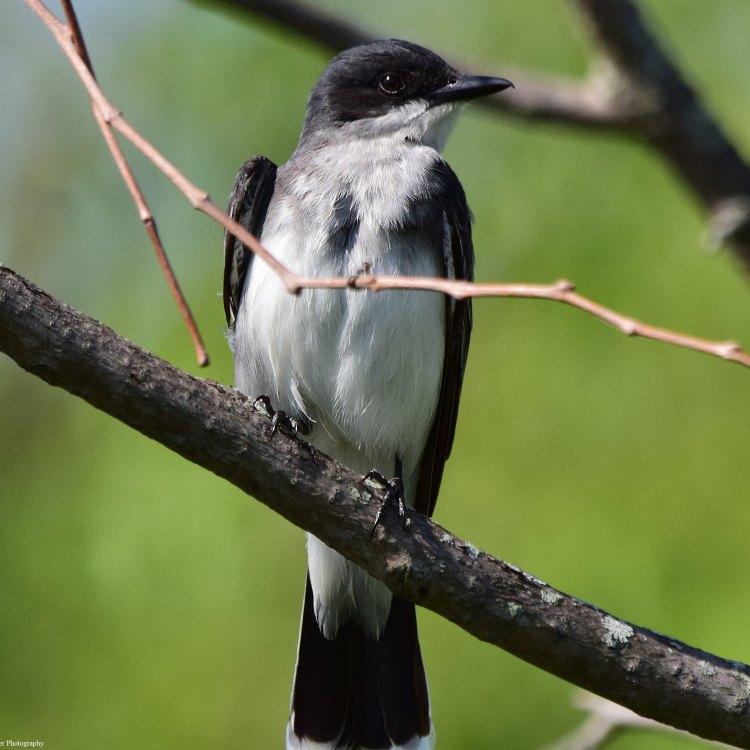
The Mighty Eastern Kingbird: A Master of the Skies
Disclaimer: The content provided is for informational purposes only. We cannot guarantee the accuracy of the information on this page 100%. All information provided here may change without prior notice.



